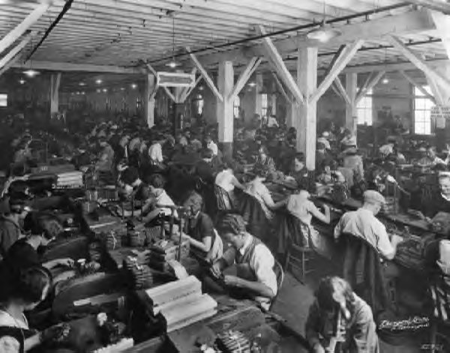
Work as imagined (WAI) versus work as a done (WAD), some abstract terms, but really useful in terms of their implications. We could also refer to the terms collectively, a different label, the job perception gap.
Managers and supervisors believe that work is being done in accordance with the procedures, that's work as imagined, for example, a manager comes up with a procedure or process to do a particular task, away from the front line operators. Meanwhile, workers are actually adapting and improvising to get things done. That's the work as done part, a discrepancy between what we imagine should happen and what actually happens on the ground.This distinction comes from the Tayloristic proceduralisation of work (think ford production line), where we developed the prescriptive rules and the ways of doing work effectively. Basically creating procedures separately to the workers and imposing the procedures on the workers to complete the task.

Checklists and procedures are a resource for action and a way to help structure work.
Where we go wrong is that we treat procedures and checklists as dictating how work must be done and that's where some of the issues arise.
Performance variability is inevitable, we can never 100% accurately and reliably specify how tasks must be done. We have to move away from that approach. Prof Eric Hollnagel talked about this distinction as a map that outlines the rough journey but hides the decisions and trade-offs actually made in practice.
The same can be said for work as imagined, the map versus work as done, which is the actual on-the-ground decision making and trade-offs that are made as the activity is actually undertaken. The terms “fine-tuning” and “practical drift” suggest that there's a gradual migration from tightly coupled rules to loosely coupled practices. Deviance from rules becomes normalised, the fact that the rules are so constraining and restrictive means that people have to go beyond them. As they get success, as they get rewarded, as they achieve their objectives from that violation or deviation, that then becomes the established practice which can cause some issues for the organisation.
Overly restrictive rules do not match work most of the time. Emphasis on efficiency or cost by management means people will usually tend to de-prioritise safety in practice. Operational successes, while doing those deviations, incrementally take the system closer to the edge of safe performance. Getting that recognition or rewards for achieving the job successfully, even if shortcuts or deviations have happened, means that's where people go to, as the default the next time they do that job.
Departures from the routine become the norm.
Unofficial procedures yield better and faster ways to do the job. Some of these ways overcome the hierarchical shortcoming, for example waiting for approval from a manager, people will just go ahead and deviate and get around that particular barrier.
By using this information to our advantage, safety is the result of insight into how situations demand certain actions and how resources are used to accomplish goals. Procedures are instead resources or guides for action, not prescriptions. Applying procedures is a cognitively complex and demanding activity, we need to respect that, rather than taking away people's expertise through proceduralisation. Give people goals, give them principles and give them general ways to accomplish things and allow them to use their expertise. Allow flexibility and they will figure out how to do it effectively. Safety results from knowing when and how to adapt procedures.
Having these discussions with people about when it does not fit and what do you do in that situation and what does expertise look like in this situation, are all very valuable discussions you can have to diminish the gap between work as imagined and work as done.
To progress safety performance, organisations must monitor and understand the gap between procedures and work. Most importantly, train and support people to adapt and improvise when needed. Adaptive capacity.
A practical tool is what we call the learning debrief. Assemble your team, ask curious, humble and positive questions that focus on what can be learned about normal work and normal variation from rules and procedures. For example, questions you might want to ask during the debrief include:
- where did you have to improvise or make do?
- what hazards did you spot and which did you miss?
- why do you think that's the case?
- what safety procedures our activities were actually difficult to apply?
- when you're on the tools what work is frustrating or annoying?
- if you could change one thing about safety on the job what would it be? and
- when does expertise come in handy to solve a challenge or frustration or a problem on that particular task?
The focus is on being humble and appreciative. Understanding how your people work and what can be done to improve their experience of work.





